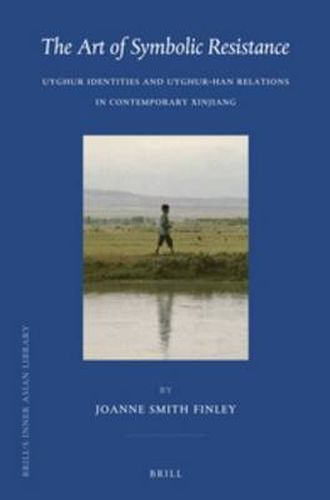Readings Newsletter
Become a Readings Member to make your shopping experience even easier.
Sign in or sign up for free!
You’re not far away from qualifying for FREE standard shipping within Australia
You’ve qualified for FREE standard shipping within Australia
The cart is loading…






Against the background of the UErumchi riots (July 2009), this book provides a longitudinal study of contemporary Uyghur identities and Uyghur-Han relations. Previous studies considered China’s Uyghurs from the perspective of the majority Han (state or people). Conversely, The Art of Symbolic Resistance considers Uyghur identities from a local perspective, based on interviews conducted with group members over nearly twenty years. Smith Finley rejects assertions that the Uyghur ethnic group is a ‘creation of the Chinese state’, suggesting that contemporary Uyghur identities involve a complex interplay between long-standing intra-group socio-cultural commonalities and a more recently evolved sense of common enmity towards the Han. This book advances the discipline in three senses: from a focus on sporadic violent opposition to one on everyday symbolic resistance; from state to ‘local’ representations; and from a conceptualisation of Uyghurs as ‘victim’ to one of ‘creative agent’.
$9.00 standard shipping within Australia
FREE standard shipping within Australia for orders over $100.00
Express & International shipping calculated at checkout
Against the background of the UErumchi riots (July 2009), this book provides a longitudinal study of contemporary Uyghur identities and Uyghur-Han relations. Previous studies considered China’s Uyghurs from the perspective of the majority Han (state or people). Conversely, The Art of Symbolic Resistance considers Uyghur identities from a local perspective, based on interviews conducted with group members over nearly twenty years. Smith Finley rejects assertions that the Uyghur ethnic group is a ‘creation of the Chinese state’, suggesting that contemporary Uyghur identities involve a complex interplay between long-standing intra-group socio-cultural commonalities and a more recently evolved sense of common enmity towards the Han. This book advances the discipline in three senses: from a focus on sporadic violent opposition to one on everyday symbolic resistance; from state to ‘local’ representations; and from a conceptualisation of Uyghurs as ‘victim’ to one of ‘creative agent’.